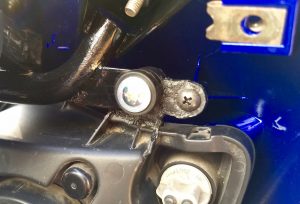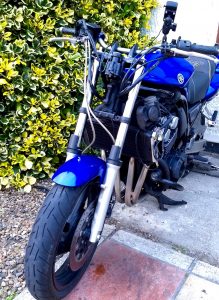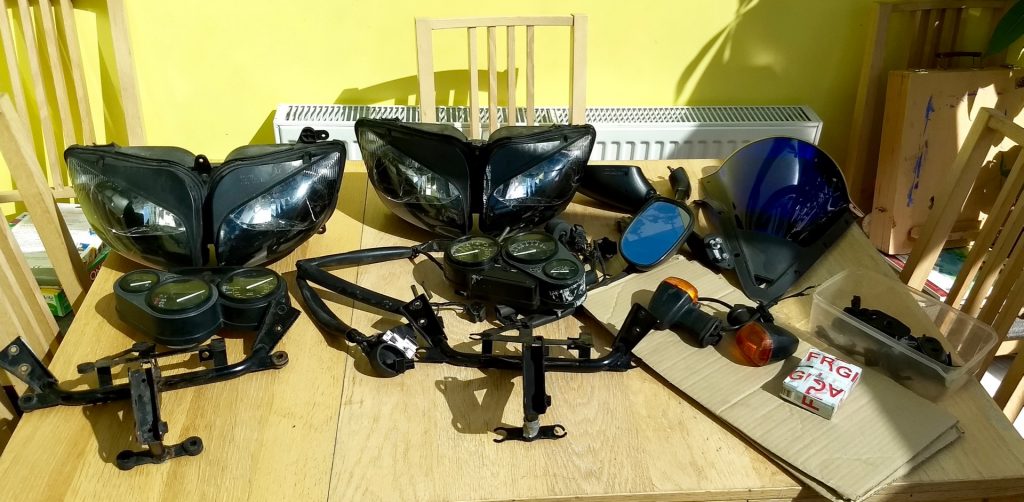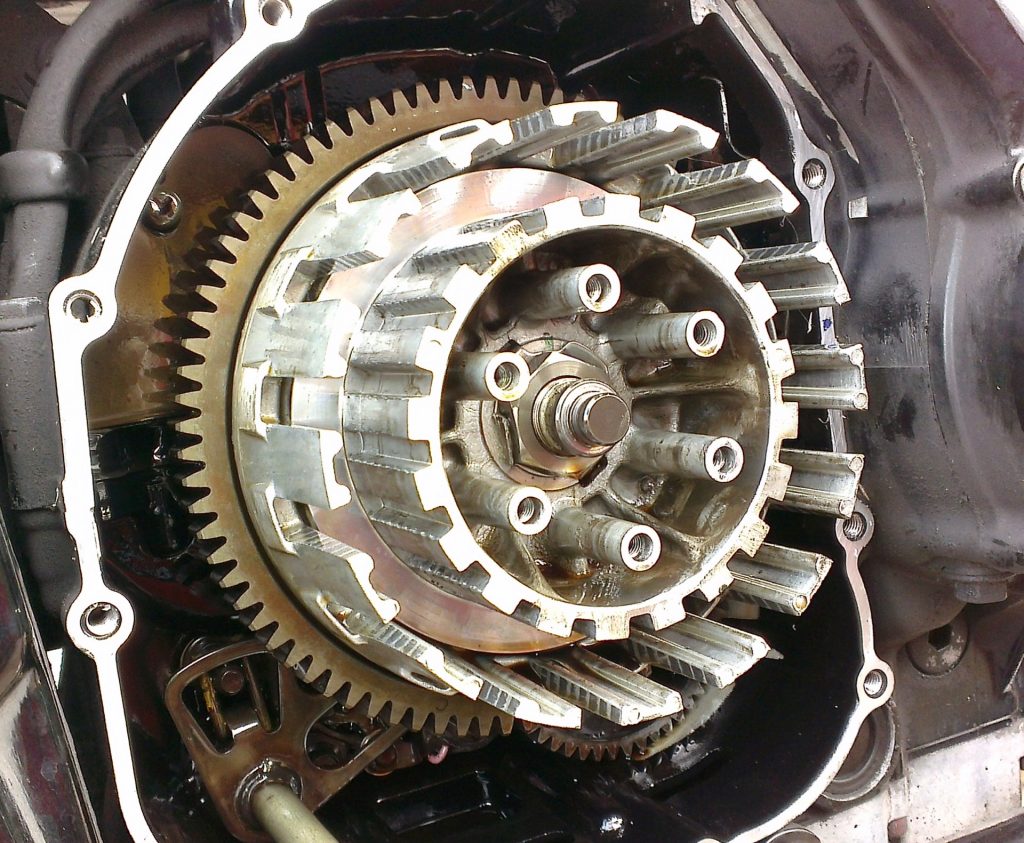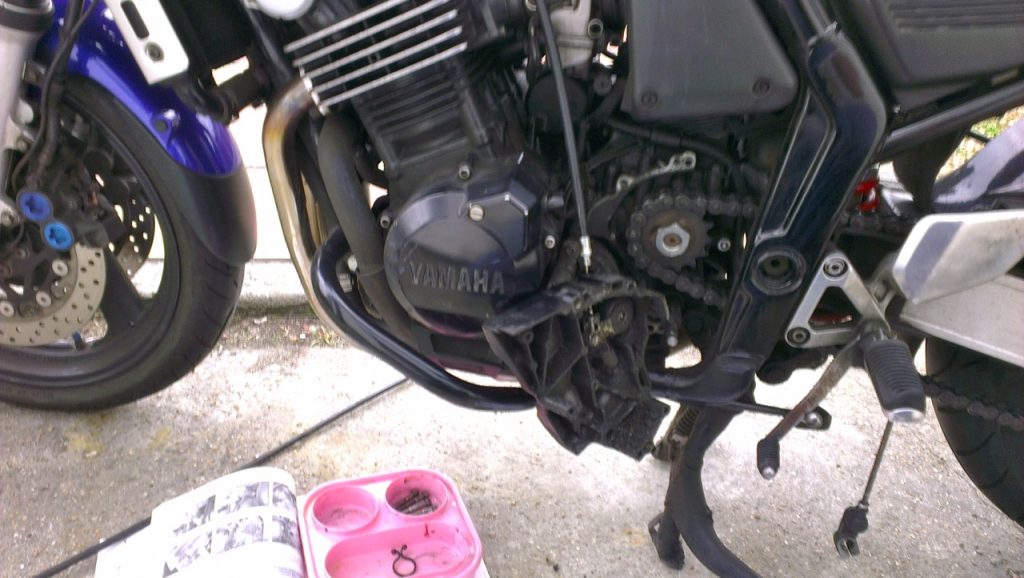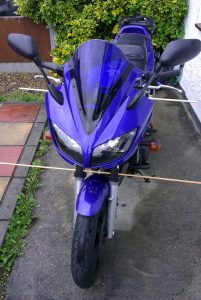There are few things more heart-sinking than being sat on your motorbike miles from home to find it no longer starts up. At first, you’re in denial and keep jabbing at the starter button, but it just generates more clicks as the starter motor refuses to kick in. You then have to consign yourself to the fact, you’re not going anywhere in a hurry.

This happened to me a few weeks ago on a cold ride up to Dunkeld. It was one of those beautiful winter days where it was bright and sunny, but cold with frost and snow surrounding the main roads. I had just stopped by the roadside to take some snaps of an ice-covered loch but found myself stuck on a bike that wouldn’t start. Thankfully, my daughter was with me pillion and was able to bump start the bike to get us moving again.
A few miles down the road I got an engine management light on the dash and a code 46. This indicated a low battery/charging system issue. After another bump start, we continued homeward bound. Close to home, the battery went completely flat, I lost the dash and lights, but the bike kept going so we persisted. But, eventually, it died as we came to a halt at a junction, though thankfully only a couple of miles from home and not too much hassle to get family out with some jump leads, charge the bike and get me home. Then began the multi-meter fun diagnosing the faults.
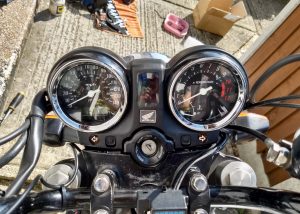 When we first picked up the Honda CBF500 it was clear it hadn’t always stayed rubber side down. It had various bits of cosmetic damage, which I have progressively fixed up as parts popped up cheap. One of the last items to address was the speedo tachometer case which had a few cracks and was taped up. Genuine Honda CBF clocks are expensive (£300+), second-hand Honda instrument clusters aren’t cheap (£100-150 odd) and are often missing mounting lugs. So, when I spotted a cheap Chinese replica speedo clocks casing for £25, I was of course intrigued and figured it had to be worth a punt.
When we first picked up the Honda CBF500 it was clear it hadn’t always stayed rubber side down. It had various bits of cosmetic damage, which I have progressively fixed up as parts popped up cheap. One of the last items to address was the speedo tachometer case which had a few cracks and was taped up. Genuine Honda CBF clocks are expensive (£300+), second-hand Honda instrument clusters aren’t cheap (£100-150 odd) and are often missing mounting lugs. So, when I spotted a cheap Chinese replica speedo clocks casing for £25, I was of course intrigued and figured it had to be worth a punt.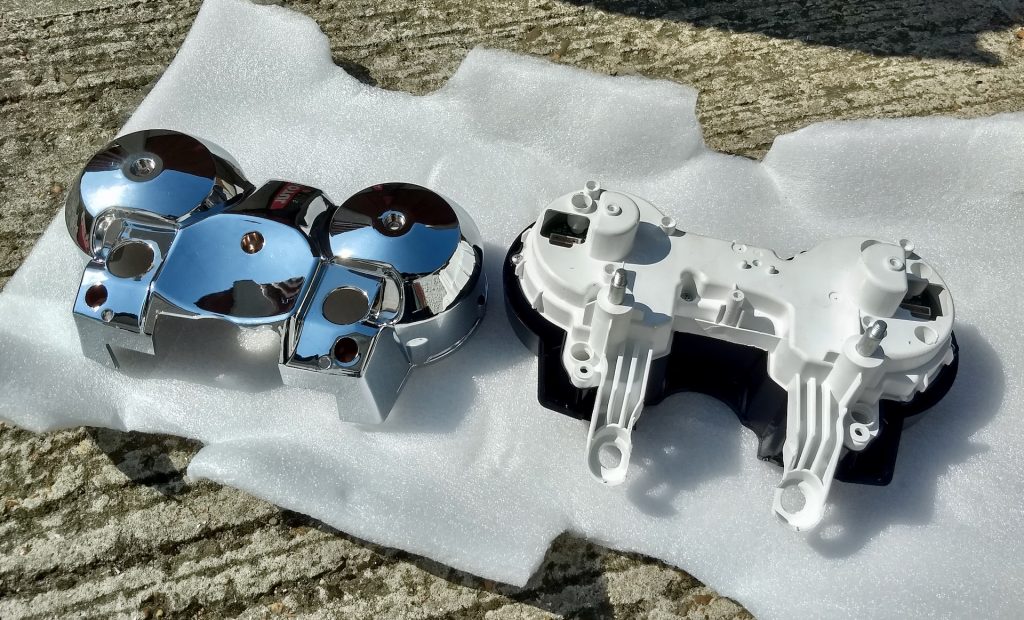
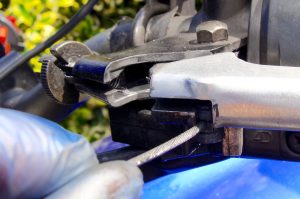 A common job on any bike with a cable clutch that’s done a few thousand miles or worse has had a snapped cable. As time progresses cutch cables will stretch, requiring adjustment to bring in the slack, but eventually, they will need replacing. Similarly, if they have frayed or kinked preventing easy movement a replacement is the best course of action. Here I’ll walk you through step by step how to replace a clutch cable on a Yamaha Fazer FZS 600 (1999-2003), but other bikes will be fairly similar, tending to vary only on how the bottom end of the cable connects to the clutch.
A common job on any bike with a cable clutch that’s done a few thousand miles or worse has had a snapped cable. As time progresses cutch cables will stretch, requiring adjustment to bring in the slack, but eventually, they will need replacing. Similarly, if they have frayed or kinked preventing easy movement a replacement is the best course of action. Here I’ll walk you through step by step how to replace a clutch cable on a Yamaha Fazer FZS 600 (1999-2003), but other bikes will be fairly similar, tending to vary only on how the bottom end of the cable connects to the clutch. 